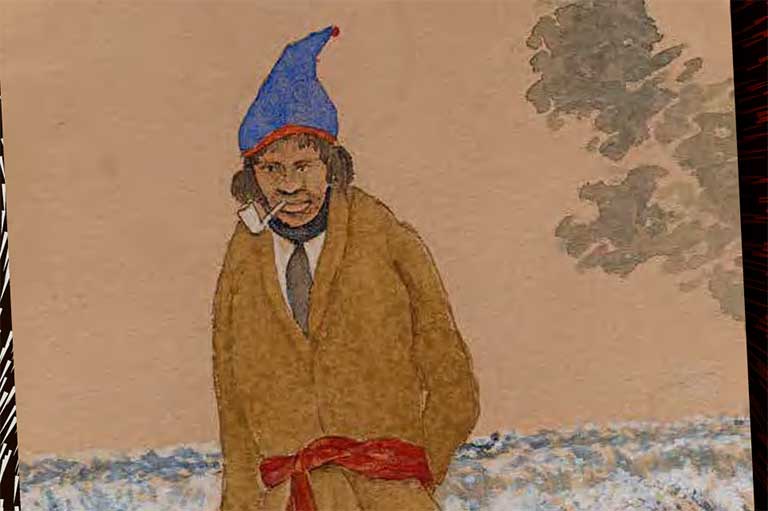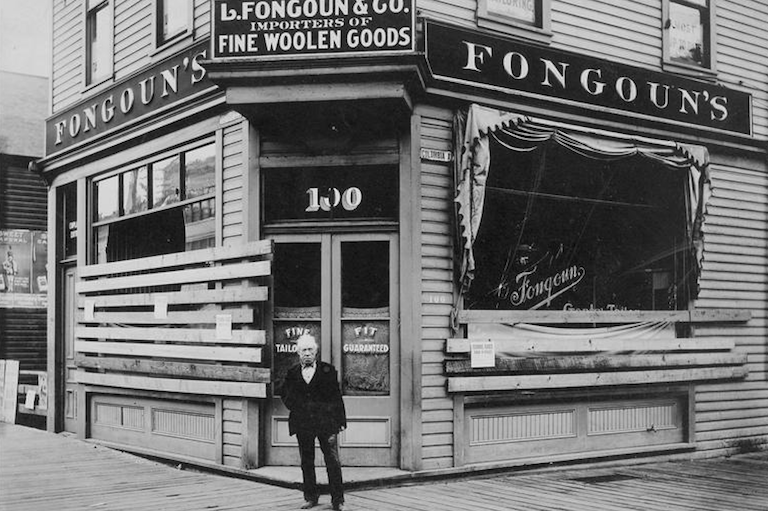Africville Note-taking Exercise
Grade Levels: 5/6
Subject Area: Social Studies, History, ELA
This lesson is inspired by the History Bits video “Remembering Africville.”
Lesson Overview
This lesson teaches students about the history of Africville, Nova Scotia while also practicing the academic skills of attentive listening, note-taking, and summarizing. Students will take note of important names, dates, locations, and events that are important in the history Africville. They will then summarize the information gathered into a piece of writing.
Historical Thinking Concept(s)
- Establish historical significance
- Use primary source evidence
- Identify continuity and change
- Analyze cause and consequence
- Take historical perspectives
- Understand the ethical dimension of historical interpretations.
Learning Outcomes
Students will:
- Identify and select important dates, events, individuals, keywords, and quotes that are important to the history of Africville.
- Organize their notes onto a note-taking graphic organizer.
- Create a 5-7 sentence paragraph using the facts from their graphic organizer.
Background Information
Africville was an African-Canadian village located north of Halifax from the mid-19th to mid-20th centuries. It was officially settled in the 1840s with the purchase of land by William Brown and William Arnold, although oral histories suggest some families can trace their connection to the land going back to the 1700s. Africville was a vibrant community and home to a predominantly African Nova Scotian community for more than 150 years.
The village was filled with close-knit families, and community-owned stores. The small town boasted a school and a post office, but the heart of the community was by far the Seaview United Baptist Church.
Africville suffered from racially discriminatory policies that prevented the residents from receiving basic infrastructure such as sewage systems, access to clean water, proper garbage disposal, and paved roads, despite residents’ repeated petitions to the city of Halifax. Furthermore, in 1947 Africville was redesignated from residential land to industrial land, regardless of the many people who still lived in Africville. This allowed the city to place an infectious disease hospital, a prison, and the city dump near Africville by 1955. This made Africville increasingly difficult to live in and compounded the issues made by the lack of infrastructure.
By 1964, the city wanted the land that Africville stood on, in the Bedford Basin, to be used for other purposes for the city’s benefit, even if that meant removing the community of Africville. The city appointed a social worker to negotiate the sale of Africville land, but many residents did not receive a fair price for their land or were never compensated. In July 1964, the city purchased the first of the Africville properties initiating the movement of residents to various locations throughout Halifax. The relocation program was largely completed by the end of 1967.
The last Africville resident — Aaron “Pa” Carvery — left Africville on January 2, 1970. By that time, approximately 400 people from 80 families had been relocated. In addition to the loss of their homes, the people of Africville lost the Seaview United Baptist Church, the spiritual heart of their community.
The land was eventually turned into private housing, a dog park, and ramps for the A. Murray MacKay Bridge and the Fairview Container Terminal. In 1996, the land was declared a National Historic Site of Canada. By 2012, a replica of Seaview was built and now holds Christmas services. The church also serves as a museum to commemorate the racial injustices committed on this land and to remember those that lived there.
The effort to maintain a strong community tie to Africville continues as there is an annual weekend-long gathering of former residents and descendants of Africville at the site of what used to be their community.
Lesson Activity
Activating:
- Start the lesson by asking students to share interesting facts or details about their own communities. The educator can also choose to share interesting facts about their community.
- The teacher should record some of the answers in a place that can be easily viewed by the students, such as a white board, chart paper, or digitally.
- Introduce facts about the community of Africville, such as who lived there, when the land was settled, and when the community was relocated. The teacher can also explain some of the more advanced terms that will be present in the assignment materials.
- Hand out the note taking graphic organizer to the students. Highlight and explain all the sections of the graphic organizer.
- Using some of the facts that were gathered during the earlier class discussion, demonstrate how the graphic organizer should be used by filling in the sections in front of the class.
Acquiring:
- As a class, watch the History Bits video titled “Remembering Africville.” Be sure to pause the video where necessary to point out important facts such as dates, names, and events and to allow the students time to complete their notes on that fact before continuing the video. Field for questions during the pauses; students may need clarification on something that was said in the video.
- Play the video of the aloud reading of Shauntay Grant’s book entitled Africville. Be sure to write the name of the author and illustrator on the board as the students can use this in their notes. Ask the students to find a quote from the book and include it in their notes.
- Look through the Nova Scotia Archives’ online exhibit Gone but Never Forgotten: Bob Brooks' Photographic Portrait of Africville in the 1960s. Pull out some photos to show the students. Here are some good examples to show students:
- Artifact 1: Boys beside Canadian National railcar, Africville, with "Please boil this water before drinking and cooking" sign in foreground
- Artifact 2: Two Africville houses
- Artifact 3: Two young people walking along an unpaved street, Africville
- Artifact 4: Young blueberry pickers, Africville, with railway tracks, houses and Bedford Basin in the background
- Artifact 5: Young men playing horseshoes, Africville
- Artifact 6: Family in their living room, Africville
- Ask your students some prompting questions and connect answers to the History Bits video or other research.
- What kinds of living conditions do you notice in these photos?
- Can you get a sense of what it was like to live here? What might that look like?
- Is there a difference between outside their homes and inside?
- Can you get a sense of the community that prevailed in Africville?
Applying:
- After the materials have been reviewed, give the students a chance to finish writing and refining their notes. Give them opportunities to ask both you and their peers questions as they arise. Ask students to share some of the facts they have recorded on their note-taking sheet. You can organize this information in a highly visible place for students, such as a white board, chart paper, or digitally.
- Help the students to organize the information into the proper categories by visually modelling the process for them. Make corrections where needed. Assure the students that if they have any empty boxes, they can fill them with some of the facts gathered by the class from the previous step.
- After the students have completed the note taking exercise, collect their sheets. Before handing them back, be sure that each student has enough facts to write a five to seven sentence paragraph.
- Ask students to create a five to seven sentence paragraph. The paragraph should contain five facts related to Africville that they have learned during the lesson.
- Teachers may also allow students to write the five to seven facts as a poem or any other artistic piece of writing related to Africville.
- The piece of writing, whether creative or formal, should demonstrate the student’s understanding of Africville’s history and important events related to Africville that have been discussed during class.
Materials/Resources
- Note-taking Organizer
- Projector
- Whiteboard and markers
- Kayak comic and History Bits video “Remembering Africville”
- Africville - Shauntay Grant Read Aloud
- Africville.ca
- Candian Museum for Human Rights: The story of Africville
- Nova Scotia Archives’ Gone but Never Forgotten Exhibit
Optional Resources:
Themes associated with this article
Advertisement




